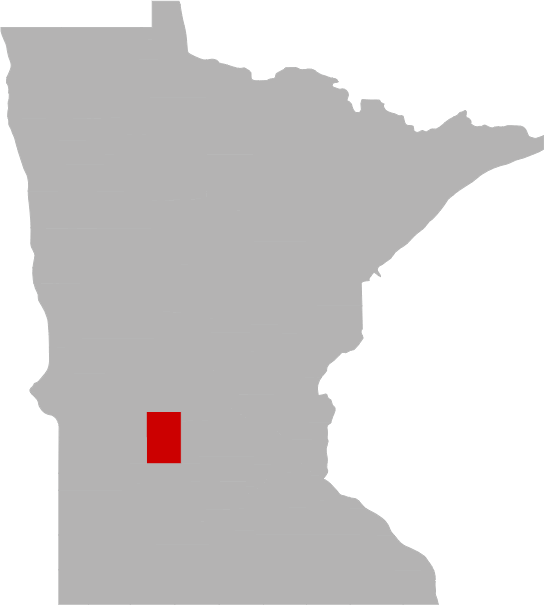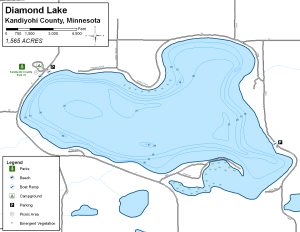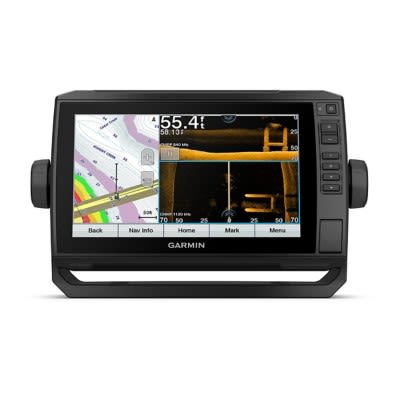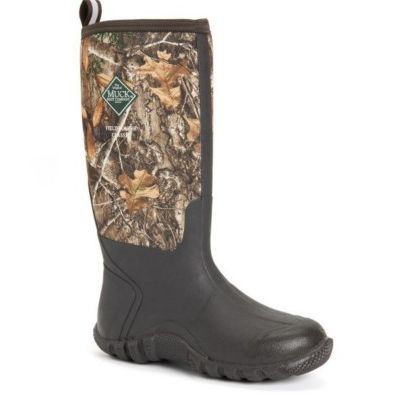Today's Best Fishing Times
Get the best fishing times for Diamond Lake with Lake-Link's Fishing Forecast. SEE MORE


Share Your Catch & Win!
Frequently Asked Questions About Diamond Lake, MN
- How big is Diamond Lake?
- How deep is Diamond Lake?
- What kind of fish can you catch in Diamond Lake?
- What are the closest cities to Diamond Lake?
- Are there places to stay in the Diamond Lake area?
- Are there topographical lake maps available Diamond Lake?
- Are there boat launches on Diamond Lake?
- Are there places to eat and drink near Diamond Lake?
- What are the fishing regulations for Diamond Lake?
- What is the average air temp for Diamond Lake?
- Are there any state parks near Diamond Lake?
How big is Diamond Lake?
How deep is Diamond Lake?
What kind of fish can you catch in Diamond Lake?
Other fish species in the lake include Fathead Minnow, Golden Shiner, Green Sunfish, Hybrid Sunfish, Johnny Darter, Spottail Shiner and White Sucker.
What are the closest cities to Diamond Lake?
Are there places to stay in the Diamond Lake area?
More Lodging Options
Are there topographical lake maps available Diamond Lake?
Are there boat launches on Diamond Lake?
Are there places to eat and drink near Diamond Lake?
What are the fishing regulations for Diamond Lake?
 There are specific fishing regulations Diamond Lake that you need to know. For complete fishing regulations visit the Minnesota Department of Natural Resources. To report a violation call (800) 652-9093. Need a Minnesota fishing license?
There are specific fishing regulations Diamond Lake that you need to know. For complete fishing regulations visit the Minnesota Department of Natural Resources. To report a violation call (800) 652-9093. Need a Minnesota fishing license?
What aquatic invasive species are found in Diamond Lake?
Join us in the fight to prevent the spread of invasive species These sneaky creatures can hitch a ride on boats, clinging onto propellers, anchor lines, and trailers. They can even survive in hidden places like bilge water and ballast tanks, or disguise themselves in dirt and sand that sticks to nets, buckets, anchors, and waders. But don't worry, we have the power to stop them in their tracks with just a few simple steps. So let's do our part and protect our waters from these unwanted invaders.
History & Status of the Fishery
A population assessment was conducted on Diamond Lake during Mid-July of 2013. Diamond is a moderately large (1,565 acres), productive, and moderately deep (27 feet maximum) lake located in Kandiyohi County. There are numerous small inlets and one large inlet that drain primarily agricultural row crops via tile systems and wetlands into Diamond. A new perforated multi-culvert barrier was installed in 2012 at the largest inlet in order to prevent adult carp from Diamond entering into three shallow upstream lakes (Hubbard, Wheeler, and Schultz) to spawn and degrade water quality. Submergent vegetation species are varied and densities moderate in Diamond. Curly-leaf pondweed has been a nuisance especially along the north portions of the lake in the past, but has been less bothersome in recent years. Emergent vegetation present includes mostly hardstem bulrush (north point, east shoreline area) and cattail species (southeast bay). Shoalwater substrates of the main basin are mostly sand, rubble, and gravel. Silt and muck compose the majority of substrates in a shallow southeast bay. Mid-summer dissolved oxygen levels (>7.0 ppm) were good down to 21 feet deep during 2013. Water clarity was fair on July 22, 2013 (5.0 feet). Walleye natural reproduction is usually frequent and significant in Diamond compared to other Spicer Area lakes. Diamond is a popular lake for a variety of fish species which include walleye, northern pike, black crappie, bluegill, yellow perch and largemouth bass.
Black crappie numbers were abundant in 2013 (19.67 fish/gillnet) compared to the Diamond Lake historical average (6.01 fish/gillnet). The black crappie average size was moderate (0.47 pounds, 8.65 inches) in the 2013 gillnets. The 2013 catch rate of larger (>10 inches) black crappie was high (10.67 fish/gillnet). Black crappie growth rates were near or above the Spicer Area normal ranges for ages 2-7. The 2012 and 2009 year classes comprised 78% and 15% respectively of the 2013 black crappie gillnet and trapnet catch. Anglers had good success catching moderate to large size black crappie (2009 year class) in the 2013-14 winter.
Bluegill numbers were abundant in 2013 (36.83 fish/trapnet) compared to the historical average (12.99 fish/trapnet). The 2013 bluegill average size was small (0.09 pounds and 4.88 inches) from trapnets. However, we did observe local anglers catching moderate numbers of large sized (>0.5 pound) bluegill during the 2013 summer survey in Diamond.
A spring electrofishing survey, which best samples adult largemouth bass, was not conducted due to time constraints in 2013. We did sample low numbers of largemouth bass in the trapnets (0.25 fish/trapnet, 1.23 pounds average weight) during 2013 summer survey.
Northern pike numbers were abundant in 2013 (9.33 fish/gillnet) compared to the Diamond Lake historical average (4.68 fish/gillnet). The 2013 northern pike average size was small (2.63 pounds and 21.68 inches). The northern pike historical average weight is 2.73 pounds from gillnets. The 2013 catch rate of larger (>28 inches) northern pike was low (0.33 fish/gillnet). Northern pike growth rates were within the Spicer Area normal ranges for ages 1-3 and above the normal ranges for ages 4-7. The 2010 year class comprised 69% of the 2013 gillnet and trapnet catch.
Yellow perch numbers were abundant in 2013 (89.33 fish/gillnet) compared to the Diamond Lake historical average (45.44 fish/gillnet). The 2013 yellow perch average size was moderate (0.16 pounds and 7.10 inches) from gillnets. The 2013 catch rate of moderate sized (>8 inches) yellow perch was high (12.38 fish/gillnet).
Walleye were abundant in 2013 (15.00 fish/gillnet) compared to the normal range for similar lakes, but comparable to the historical average (16.73 fish/gillnet) for Diamond. Walleye sampled in gillnets during the 2013 survey were large (2.67 pounds and 18.22 inches). The walleye historical average weight is 1.82 pounds from gillnets. The 2013 catch rate of larger walleye (>20 inches) was high (6.00 fish/gillnet). Walleye growth rates were within the Spicer Area normal ranges for ages 1-8. The four prominent walleye year classes present in the 2013 gillnet and trapnet catch were from 2011 (27%), 2009 (25%), 2006 (20%) and 2005 (18%). Abundant numbers of young of year "YOY" walleye due to natural reproduction (>100 YOY/hour) were noted in fall electrofishing surveys of 2005-2006 and 2011 and yearlings in spring electrofishing survey of 2010. The YOY walleye catch rates were low (6.00 YOY/hour) in both the 2012 and 2013 fall electrofishing surveys. Recent walleye stockings included 2004 (19,354 fingerlings, 925 pounds; 276 yearlings, 46 pounds; 487 adults, 348 pounds) and 2013 (33,889 fingerlings, 1,405 pounds). Local anglers were reporting good catches of smaller walleye (12-14 inches) during the 2013 summer.
Black bullhead numbers were moderate in 2013 (15.00 fish/gillnet) compared the normal ranges of similar lakes, but below the Diamond Lake historical average (34.65 fish/gillnet). The 2013 black bullhead average size was large (1.10 pounds) from gillnets.
Current fish management activities on Diamond include monitoring the fish population on a periodic basis, protecting native aquatic vegetation through the permit process, participating in local watershed initiatives, preventing and educating about the spread of invasive species, and stocking various fish species as warranted. A fall electrofishing survey is scheduled to assess walleye natural reproduction in 2014. A resurvey of the Diamond Lake fish population is currently scheduled for 2018.
What is the average air temp for Diamond Lake?
Are there any state parks near Diamond Lake?
For more Minnesota State Park information see our State Park Guide.
More Nearby Lakes To Explore
There's more lake's to explore around Diamond Lake...| DISTANCE | ACRES | MAX DEPTH | |
| Bass Lake | 2.1 mi | 50 | 31 ft |
| Unnamed Lake | 4.5 mi | 39 | 8 ft |
| Elkhorn Lake | 5.2 mi | 79 | 41 ft |
| Green Lake | 5.6 mi | 5,561 | 110 ft |
| Peterson Lake | 5.8 mi | 135 | 15 ft |
| Calhoun Lake | 6.3 mi | 647 | 13 ft |
| Minnetaga Lake | 7.2 mi | 791 | 9 ft |
| Ella Lake | 7.3 mi | 153 | 12 ft |
| Carrie Lake | 7.5 mi | 89 | 26 ft |
| Eagle Lake | 7.7 mi | 849 | 67 ft |


















